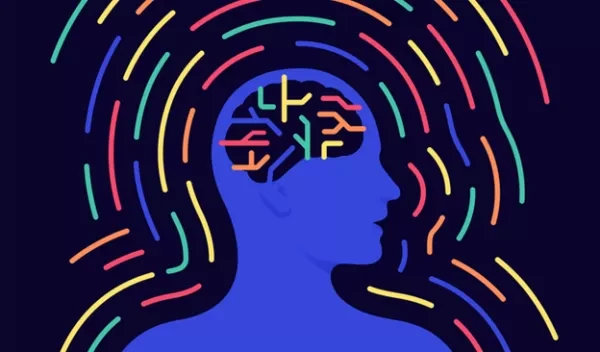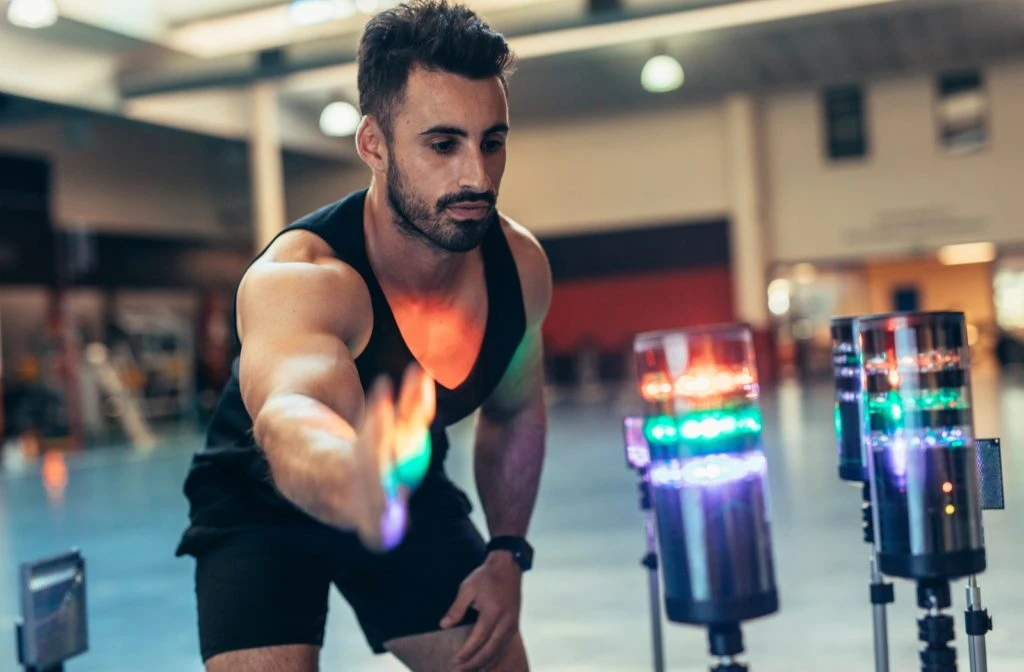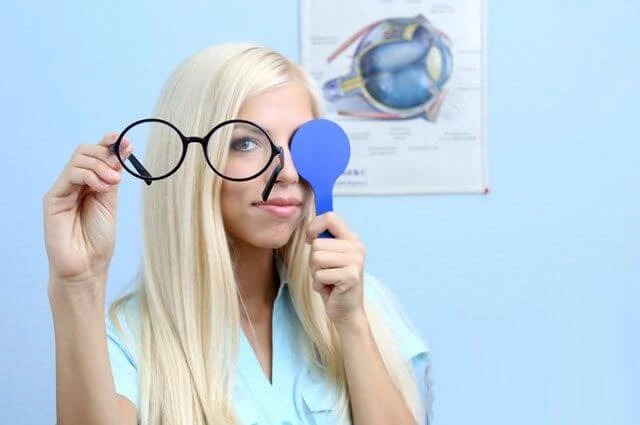Athletic Performance and Role of Vision
Vision plays a fundamental and often underestimated role in athletic performance, impacting an athlete’s ability to perceive, react, and make decisions under pressure. It influences every aspect of sport, from tracking fast-moving objects to spatial awareness and depth perception. Athletes rely on their vision to anticipate opponents’ actions, time their movements accurately, and adjust their techniques in real-time. The eyes, along with the brain, form a sophisticated system that allows athletes to process visual information and translate it into motor responses that are critical for success in their respective sports.
The Basics of Vision in Sports
The basics of vision in sports encompass a series of specialized visual skills that are essential for an athlete to perform at their best. One key component is visual tracking, the ability to follow moving objects smoothly and with precision. This skill is vital in nearly every sport, especially those involving fast-moving balls like tennis, soccer, or baseball, where athletes must maintain focus on the object while anticipating its next move. Another important aspect is focus flexibility, which allows athletes to shift their gaze from near to far objects quickly. This is crucial in sports such as basketball or football, where players must be able to shift their attention between their immediate surroundings, teammates, and the ball in motion. Additionally, contrast sensitivity plays a major role in an athlete’s ability to distinguish between objects in varying light conditions, whether it’s tracking a ball in bright sunlight or recognizing a player on a dimly lit field. These basic visual skills are often refined through training, helping athletes process visual information faster and more accurately. Athletes with strong foundational visual abilities can make split-second decisions, react more efficiently, and maintain superior performance in high-stress situations, where visual clarity and quick processing are paramount.
In a basic sense, vision allows athletes to perceive the environment, recognize patterns, and track objects or movements. The process starts with light entering the eye and being focused on the retina. The retina then converts this light into electrical signals that travel to the brain’s visual cortex, where the brain interprets the signals. In sports, the demands on vision go beyond simple sight—athletes need to process visual information quickly, discern relevant details from distractions, and integrate their visual perception with their motor responses.
Key Aspects of Vision in Sports:
- Visual Acuity: The sharpness of vision that allows athletes to identify objects and opponents at varying distances. In sports like basketball or soccer, being able to spot teammates or opponents across the court or field is essential.
- Depth Perception: Crucial for judging the distance between objects, depth perception helps athletes in sports like tennis or baseball to judge the trajectory and speed of a ball, making it easier to predict where to position themselves for a successful play.
- Peripheral Vision: The ability to see things outside the direct line of sight, especially important in fast-paced sports like football or hockey. Peripheral vision helps athletes detect movement or threats in the surrounding environment without needing to look directly at them.
- Eye-Hand Coordination: This involves the ability to process visual information and respond with appropriate motor skills. It is particularly critical in sports such as table tennis, where athletes must quickly adjust their movements based on the ball’s speed and angle.
- Visual Reaction Time: This is the time it takes for an athlete to process a visual stimulus and react. Athletes with quicker visual reaction times are able to perform faster and more effectively, especially in sports that involve quick, split-second decisions.
The Brain-Body Connection
Athletes don’t just use their eyes to see; they rely on a complex connection between the brain and the body to translate visual inputs into coordinated actions. The brain processes visual information rapidly, allowing athletes to anticipate events before they fully occur. The visual-motor system enables this quick response by sending signals from the brain to the muscles. In sports, where timing is everything, this connection allows athletes to optimize their movements in response to what they see, leading to more precise actions and fewer mistakes.
The integration of vision with the body’s movements is so precise that athletes often perform without conscious thought, relying on muscle memory and habitual responses. However, this synchronization can be disrupted by fatigue, stress, or environmental factors like poor lighting or blurred vision. In such cases, athletes may experience slower reaction times, decreased accuracy, and an increased likelihood of injury. This highlights the importance of maintaining not only physical conditioning but also visual health for peak performance.
The brain-body connection is the foundation of an athlete’s ability to execute complex movements with precision and efficiency. This intricate system involves constant communication between the brain and muscles, where the brain sends signals through the nervous system to initiate physical movements.
In sports, the brain rapidly processes sensory inputs—visual, auditory, and tactile—before translating them into motor commands that guide an athlete’s body. For example, in sprinting, the brain not only coordinates the activation of leg muscles but also anticipates the environment, adjusting posture and stride length in real-time based on the runner’s perceived speed, fatigue, and race conditions. This seamless integration is essential for optimizing performance, reducing errors, and minimizing injury risk, as the brain continually adjusts movements to align with immediate goals and external conditions.
Moreover, the brain-body connection is critical in maintaining balance and coordination during dynamic, high-pressure situations. In sports like gymnastics or surfing, athletes must continually adjust their body position, often with little to no time for conscious thought. This is where proprioception—an internal sense of the position and movement of body parts—plays a vital role. Proprioceptors, located in muscles and joints, send feedback to the brain, allowing athletes to stay aware of their body’s orientation in space. Through practice, athletes develop enhanced proprioception, which helps them execute complex maneuvers with a high degree of control and fluidity. In these cases, the brain doesn’t merely react to sensory input but anticipates the body’s needs and adjusts movements before the athlete is fully aware of it, a skill that distinguishes elite performers from their competitors.
Vision Training and Its Impact
Given its critical role in athletic performance, many athletes and teams incorporate vision training into their preparation. Vision training focuses on improving visual skills such as focus, eye movement control, and the ability to process visual information quickly. Exercises often include activities that train the eyes to track moving objects, improve contrast sensitivity, and enhance reaction time. By strengthening visual faculties, athletes can increase their efficiency on the field or court, respond faster, and make better decisions in high-pressure situations.
Common Vision Training Techniques:
- Eye Tracking Drills: These exercises involve following a moving target, such as a ball or light, with the eyes. They can help athletes improve focus and coordination.
- Focus Flexibility Exercises: These drills involve switching focus between near and far objects rapidly, training the eyes to adapt to different visual distances quickly.
- Peripheral Vision Exercises: These techniques help athletes increase their awareness of the environment around them, which is especially beneficial in sports where the athlete must be aware of both the ball and opposing players simultaneously.
Visual Perception and Sports Performance: Case Studies
The impact of vision on performance can be illustrated through case studies of elite athletes. For instance, in baseball, players such as professional hitters need exceptional visual acuity and depth perception to track a fast-moving pitch and judge its trajectory. A hitter who can spot minute changes in pitch speed or spin will have a significant advantage over one with slower reaction times.
In contrast, in sports like basketball or soccer, athletes rely heavily on peripheral vision to keep track of teammates and opponents. A point guard in basketball, for example, needs to have an expansive view of the court, using peripheral vision to anticipate defensive moves and find open teammates for passes. Players with superior peripheral vision can see potential opportunities or threats that less skilled players might miss, giving them a tactical advantage.
How Vision Affects Athletic Performance
| Aspect of Vision | Impact on Athletic Performance | Example Sports |
|---|---|---|
| Visual Acuity | Sharpness of vision necessary for judging distances, spotting teammates, and reacting to fast-moving objects. | Basketball, Soccer, Tennis |
| Depth Perception | Ability to judge distances, crucial for anticipating ball trajectories and positioning. | Baseball, Tennis, Skiing |
| Peripheral Vision | Detecting movement and opponents outside the direct line of sight, crucial for spatial awareness. | Football, Hockey, Basketball |
| Eye-Hand Coordination | Synchronization of vision and motor response, helping to track and respond to moving targets. | Table Tennis, Baseball, Boxing |
| Visual Reaction Time | Speed at which an athlete reacts to visual stimuli, directly influencing decision-making. | Football, Soccer, Tennis |
Common Visual Challenges in Athletes
Common visual challenges in athletes can significantly impact their performance, as even subtle visual impairments can lead to slower reaction times, reduced accuracy, and difficulty reading the game or tracking fast-moving objects. One of the most prevalent issues is refractive errors, such as nearsightedness (myopia) or farsightedness (hyperopia), where the athlete struggles to focus on distant or close objects, respectively. This can make it difficult to track fast-moving balls in sports like baseball, tennis, or soccer. While corrective lenses like glasses or contact lenses can address these challenges, some athletes may struggle with the discomfort or limitations these tools impose, especially in high-contact or fast-paced sports.
Binocular vision problems are another common issue, where the eyes fail to work together properly, leading to issues with depth perception and coordination. This can be particularly troublesome for athletes who rely on fine visual judgments, such as in basketball, where determining the distance to the basket or a fast-moving opponent is crucial. In addition, visual fatigue often affects athletes during extended training sessions or competitions, especially in sports requiring intense focus, such as motorsports or archery. Prolonged exposure to high-intensity visual tasks can strain the eyes, causing blurry vision, headaches, or decreased ability to focus, which can impair performance.
Concussions and brain injuries are also major visual challenges, as they can disrupt the brain’s ability to process visual information, resulting in issues such as light sensitivity, double vision, and difficulty tracking moving objects. These challenges can be especially debilitating for athletes recovering from a concussion, as they may struggle with coordination and concentration, putting them at risk for further injury. Lastly, contrast sensitivity can affect athletes’ ability to distinguish between objects and backgrounds, particularly in low-light conditions or when objects are moving against a cluttered background. For example, a football player may have difficulty spotting a ball against the sky, or a hockey player may struggle to see the puck against the ice. Together, these common visual challenges highlight the critical role of eye health and visual training in ensuring peak athletic performance.
Despite the significant role vision plays in athletic performance, athletes can face several visual challenges that may hinder their abilities. Some of the most common visual problems include:
- Refractive Errors: Conditions such as nearsightedness or farsightedness can affect an athlete’s ability to see clearly. Corrective lenses or contacts are commonly used to address these issues.
- Binocular Vision Problems: These affect the ability of both eyes to work together properly, impacting depth perception and eye coordination. Athletes with this condition may struggle with tasks like tracking fast-moving objects.
- Visual Fatigue: Intense focus on the visual field over prolonged periods can cause visual fatigue, impairing the ability to process information quickly and accurately.
- Concussions and Brain Injuries: These can impact visual processing, leading to difficulties with tasks that require coordination between vision and motor skills.
In summary, vision is a cornerstone of athletic performance. From enhancing reaction time to improving strategic decision-making, the role of vision is undeniable in sports. Athletes must train their eyes and visual perception just as they train their bodies for optimal performance. As we continue to understand the intricate connection between the brain, eyes, and body, the future of sports training will likely include even more sophisticated methods for improving vision and visual reaction times. Athletes who leverage the power of their vision will undoubtedly have a competitive edge, making vision training as important as physical training for success in sports.
Partners:





